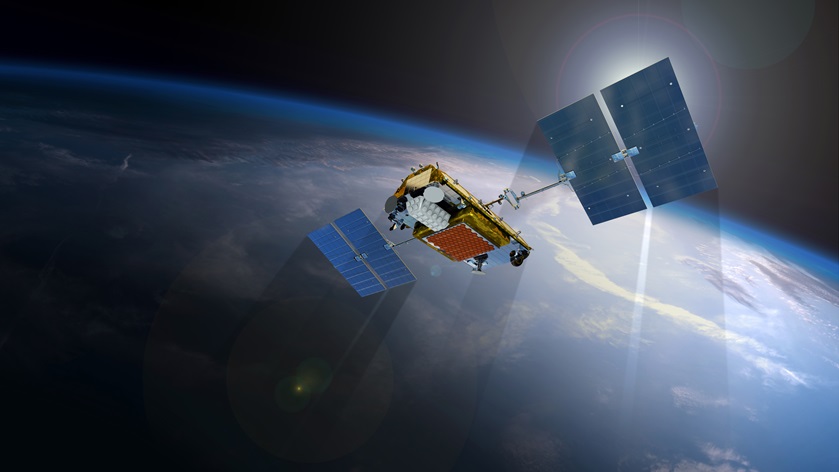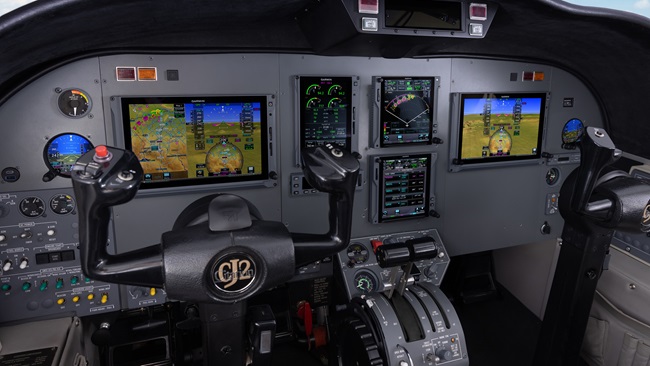Nav Canada seeks ADS-B antenna diversity
January satellite launch completes space-based network
A recent launch from California completed a space-based aircraft surveillance network, the future use of which has implications for general aviation equipment requirements in Canada.

On the morning of Jan. 11, a SpaceX Falcon 9 rocket launched from Vandenberg Air Force Base, California, delivered the final 10 Iridium NEXT satellites to low earth orbit. That launch completed the Iridium NEXT constellation, with 75 satellites in orbit—66 operational satellites and nine spares. Each satellite carries an Aireon Automatic Dependent Surveillance-Broadcast (ADS-B) payload.
In a webinar later that day, Nav Canada announced its proposed ADS-B Out performance requirements mandate. Phase 1, which would be implemented Jan. 1, 2021, would include Class A airspace, and Class E airspace above Flight Level 600. Phase 2, beginning Jan. 1, 2022, would affect Class B airspace. While Class A airspace in Canada is the same as in the United States—from 18,000 feet to FL600—Class B is different; Canada’s Class B extends from 12,500 feet msl up to but not including 18,000 feet msl. Phase 3 is less defined, expanding ADS-B as needed to “specific controlled airspace, en route or at an airport, starting no sooner than 2023.”
Nav Canada will require 1090-MHz extended squitter (1090ES) ADS-B compliant with RTCA DO-260B after Jan. 1, 2024, although DO-260 or DO-260A can be used until then. And here’s a kicker for light general aviation aircraft: The agency also proposes to mandate antenna diversity—that is, antennas on both the bottom and top of the aircraft—to support 5-nautical-mile aircraft separation using space-based ADS-B.
One challenge for lighter GA aircraft is that few ADS-B transponders are available that support antenna diversity. Only the Garmin GTX 33D ES and GTX 330D ES, and the L3 Commercial Aviation Lynx NGT-9000, currently support diversity. (Non-diversity GTX 33ES and GTX330 ES models can be converted at the factory to include antenna diversity; a software unlock adds the capability to non-diversity NGT-9000s.)
“The aeronautical study team consulted with domestic and international stakeholders,” Nav Canada said in the presentation. “The ADS-B Out performance requirements were determined in consideration of the advantages of space-based aircraft surveillance and after assessing the issues and concerns raised by stakeholders during consultation.
“The proposed mandate will provide our affected customers with the efficiency and safety benefits to justify the expense they will incur to upgrade their avionics to meet the performance requirements,” Nav Canada said, adding that the mandate will harmonize with U.S. and European ADS-B Out mandates. “Therefore a large percentage of our customers will already be suitably equipped with the avionics required for the Nav Canada proposed mandate. The 2021 timeline for our mandate will allow our other affected customers to properly equip.”
Rune Duke, AOPA senior director of airspace and air traffic, is quick to point out that Transport Canada has not yet approved Nav Canada’s request. “AOPA is continuing to work with COPA, the Canadian Owners and Pilots Association, to advocate for only justifiable airspace and equipage mandates.
“The diversity requirement would be significant if it was approved by Transport Canada,” Duke added. “Nav Canada's response to my question regarding diversity is that GA won’t be affected based on the fact TCAS II requires it, but this is only for a limited number of aircraft that have specialized solutions. There will be many GA and business aviation aircraft that are not voluntarily equipped with TCAS II that will be affected by additional antenna requirements not present in the U.S. ADS-B Out mandate. And as Nav Canada expands its mandate to lower airspace, around 2023, we can expect a diversity requirement to affect more U.S. and Canadian GA.”
Few small GA aircraft are equipped with a traffic alert and collision avoidance system (TCAS), he noted. No current Canadian regulations require private operators to equip with it, although International Civil Aviation Organization rules require that all turbine-powered airplanes with a maximum certificated takeoff weight of more than 33,000 pounds (15,000 kg) or authorized to carry more than 30 passengers, with an individual airworthiness certificate first issued after Jan. 1, 2007, be equipped with an airborne collision avoidance system (ACAS II).
The Canadian mandate specifics are still not final, Duke noted. “Nav Canada is still analyzing whether a low-altitude diversity requirement is warranted, and Transport Canada has yet to approve the initial phases of the rule that would govern the higher altitudes. We are following this effort closely.”
Duke said Nav Canada told him that it provided engineering data to Transport Canada supporting its position that diversity is required at higher altitudes, but did not share the study. In late 2017, with only the first 15 Iridium NEXT satellites carrying the space-based ADS-B payload in orbit, Aireon was busy evaluating preliminary satellite ADS-B data. And the company was seeing a lot more aircraft than it expected. Aireon can receive bottom-antenna-only signals, depending on the angles and position of the satellite; if the satellite is directly above, it will primarily see the top antenna. Aireon noted that the system was designed to receive signals from top-mounted transponder antennas, and that it receives 1090ES signals only—978-MHz universal access transceiver transmissions are invisible to the ADS-B payload’s receivers.
In fall 2017, Nav Canada published a Terms of Reference document that initiated an aeronautical study to define its proposed ADS-B Out mandate. Nav Canada notes that much of the country’s secondary surveillance radar coverage comes from Department of National Defence radars with feeds that are not always dependable, and that it might seek to decommission some ground-based radars in the future. Nav Canada also proposed exempting ADS-B Out-equipped aircraft from the planned 406-MHz ELT mandate, because Aireon offers an emergency location service expected to exceed an ELT’s performance.
AOPA filed comments on the Terms of Reference document, noting GA’s concerns about antenna diversity—among other issues.
COPA also responded to the Terms of Reference. “COPA does not support the proposed ADS-B Out 1090ES mandate below FL180 due to the disproportionate ratio of cost to benefits for GA,” said Bernard Gervais, COPA president and CEO. “We do not see any use or need for ADS-B for the GA community in the near to medium term, because of high costs burdening the aircraft owner and the lack of features and/or benefits enhancing the overall GA experience, efficiency, and safety unless everyone in the country is equipped. For now, this renders this proposal entirely unacceptable to GA operators in Canadian airspace.”
The FAA has mandated ADS-B Out equipage for flights after Jan. 1, 2020, in U.S. airspace where a transponder is required today. In addition to 1090ES, the FAA provides the option for ADS-B Out on the 978-MHz universal access transceiver frequency. However, 1090ES is the only international standard, and to date no other countries have embraced use of the UAT datalink.



